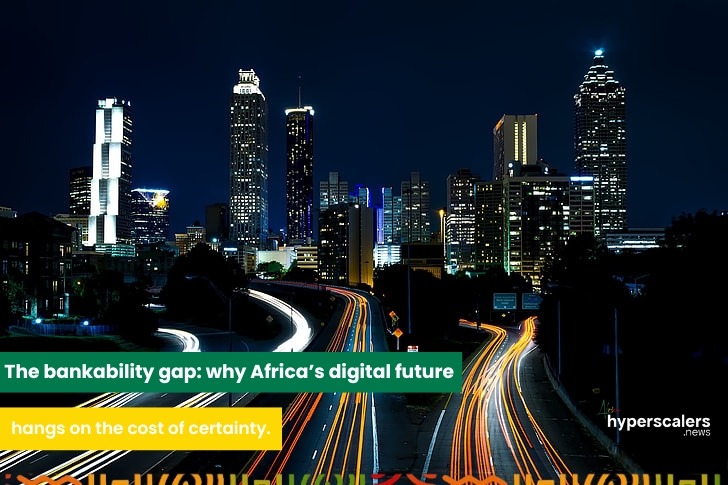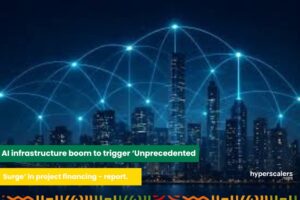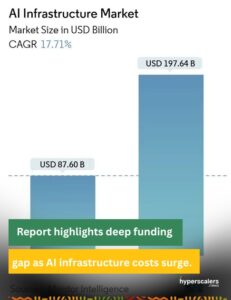Across our events – from Hyperscalers Convergence Africa to stakeholder sessions and investor roundtables – one word keeps resurfacing: bankability, the quiet, unglamorous test of whether a project can attract long-term capital at a price that makes sense. For Africa’s digital infrastructure, bankability is the missing ingredient in a market full of ambition but starved of certainty.
Just weeks ago, during the Funding Africa’s Digital Backbone panel at Hyperscalers Convergence Africa, investors debated familiar headwinds – volatility, politics, fragmented markets, weak infrastructure. One consistent question lingered: Why would anyone take the risk on Africa’s digital infrastructure?
Many digital builds are big on dreams but light on financial realism. They look impressive on slides – full of total addressable markets, institutional voids, and “1.3 billion opportunities” – but collapse when lenders ask simple questions: Who pays? For how long? In what currency?
Traditional African lenders, trained to profit from arbitrage, aren’t wired for this. Their model is to capture the spread between government paper and commercial lending, between local-currency and dollar rates, and between guaranteed flows and everything else. That mindset may work for toll roads and gas plants with sovereign guarantees. But it falters in digital projects where revenue depends on colocation leases, cloud consumption, or enterprise demand from customers with no credit ratings.
In infrastructure finance, risk can be priced; uncertainty cannot. A project can carry high risk if its contours are clear – a predictable tariff, a defined concession. But when policy or regulation shifts unpredictably or raises the cost of capital, lenders retreat. A $10 million Tier III data center that raises debt at 6 percent in Singapore pays 18 percent, or more, in Lagos or Nairobi. The problem isn’t performance; it’s predictability.
Bankability, not risk, is the real frontier. As highlighted by panelists Shayo Olumide (Vice President, Heavy Industries, Telecoms and Technology, Africa Finance Corporation), Vivek Mittal (Chief Executive Officer, African Infrastructure Development Association), Ben Roberts (Principal, Digital Economy Advisors), and Oguche Agudah (Head, Programme, Pan Africa Fund Managers Alliance and pioneer Chief Executive Officer, Pension Fund Operations Association of Nigeria), many African digital infrastructure projects fail long before they reach the financing table because they are poorly prepared – lacking feasibility studies, clear permitting pathways, and credible risk allocation.
Investors will fund exposure; they will not fund confusion. When projects are de-risked through sound preparation, such as environmental approvals, anchor clients, sovereign guarantees, or blended finance mechanisms, they cross the threshold from speculative to investable. Predictability lowers the cost of capital more than incentives ever can.

How do you determine bankability? It is beyond a checklist; it’s a narrative of confidence – the ability to convince lenders that the numbers, the policy, and the physics of a project can hold steady long enough to pay them back.
Bankability is ultimately about confidence – the belief that a project’s fundamentals will endure. In Africa’s digital economy, that confidence rests on four pillars: preparation, policy, counterparties, and cash flow clarity.
Power remains the clearest test. Data centers follow electricity, not customers. In many markets, unreliable grids force operators into captive generation, driving up CAPEX and OPEX until balance sheets strain. Bankability means stable PPAs, credible offtakers, and guarantees that convert uncertainty into predictable cash flow. In fiber and connectivity, it means right-of-way certainty, anchor tenants, and open-access pricing – conditions that make projects like Nigeria’s BRIDGE initiative financeable. In data centers, it’s utilization, energy security, and long-term interconnection agreements that matter most.
Across all sectors, risk can be priced – uncertainty cannot. The more Africa standardizes feasibility, policy, and permitting frameworks, the cheaper its digital future becomes – because predictability, not incentives, is the true currency of bankability.
Bankability collapses when policy coordination breaks down – permits delayed, agencies in conflict, or currency rules rewritten overnight. Investors don’t need perfection; they need consistency. They’ll fund tough markets if they can model the difficulty. What they can’t price is surprise.
Improving bankability is a shared responsibility. Policymakers must ensure regulatory stability, standardize tariffs, and streamline approvals. Regulators must evolve from revenue collection to partnership – seeing telecommunications not as a tax base, but as an enabler of economic growth. Investors, too, must shift from short-term arbitrage to patient, productive capital. With predictable policies and stable frameworks, infrastructure investments become what they were always meant to be – pension plans that keep paying until the very end. Operators must demonstrate discipline and transparency that turn ambition into cash flow. Development partners, for their part, must evolve from subsidizing risk to underwriting trust -through guarantees, first-loss tranches, and political-risk cover built in from day one.
Governments and regulators can’t make every project profitable – but they can make it predictable. Standardize right-of-way costs. Publish model concession templates. Fast-track approvals for power and fiber. Build pipeline credibility. Investors don’t need miracles; they need predictable follow-through.
The reason markets like Indonesia’s data center sector attract steady financing is not perfection but predictability. Indonesia built credibility through clear land-use policies, digitized permitting, and a unified infrastructure roadmap linking energy, fiber, and industrial parks. Local governments have limited discretion over right-of-way and grid access, reducing arbitrary delays. Data localization laws are explicit, not interpretive, giving investors confidence that hosting mandates won’t shift overnight. As a result, more than a dozen hyperscale facilities have been financed since 2020. Africa doesn’t need to copy Indonesia’s laws – only its discipline: clarity, coordination, and consistency.
Africa can become more than a footnote in global digital infrastructure investing. Its demography, urbanization, and data demand are converging with a new surge of local conviction. Bankability is not just finance – it is governance: contracts that mean what they say, ministries that move faster than markets, and regulators who prize consistency over control.
The real revolution won’t be the next subsea cable or cloud zone. It will be the first African project that closes on time, pays lenders on schedule, and proves that trust can be built at scale.
Because in the end, the difference between ambition and achievement isn’t power or fiber – it is bankability: the invisible architecture of trust that turns blueprints into nation-building.
Ready to dive deeper into the hyperscale revolution impacting Africa?
READ MORE HERE: www.africa.hyperscalers.news
Contact Us:
Email: projects@hyperscalers.news
Phone: +2348109003350
Follow us on Social Media: Instagram, Facebook, LinkedIn, x




